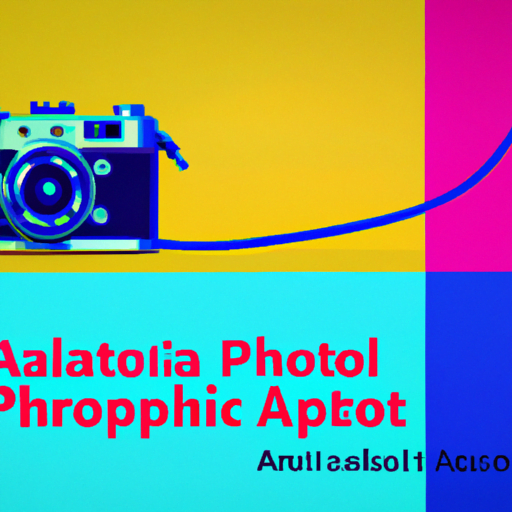
-
Table of Contents
The Future of Graphic Design: Emerging Trends and Technologies

Graphic design has always been a dynamic field, constantly evolving to meet the demands of an ever-changing digital landscape. As technology continues to advance at an unprecedented pace, the future of graphic design holds exciting possibilities. In this article, we will explore the emerging trends and technologies that are shaping the future of graphic design.
1. Artificial Intelligence (AI) in Graphic Design
Artificial Intelligence (AI) has already made significant inroads in various industries, and graphic design is no exception. AI-powered tools and software are revolutionizing the way designers work, making their tasks more efficient and streamlined.
One of the most notable applications of AI in graphic design is automated design generation. AI algorithms can analyze large datasets of design elements, styles, and trends to generate unique and visually appealing designs. This technology not only saves time but also provides designers with fresh ideas and inspiration.
Another area where AI is making an impact is in image recognition and manipulation. AI algorithms can analyze images and automatically identify objects, colors, and patterns. This capability enables designers to quickly extract relevant elements from images and incorporate them into their designs.
Furthermore, AI-powered tools can assist designers in creating accessible designs. By analyzing color contrasts and font sizes, AI algorithms can ensure that designs are inclusive and meet accessibility standards.
2. Augmented Reality (AR) and Virtual Reality (VR)
Augmented Reality (AR) and Virtual Reality (VR) technologies are transforming the way we experience design. These immersive technologies have the potential to revolutionize graphic design by providing interactive and engaging experiences.
AR allows designers to overlay digital content onto the real world, creating a seamless blend of virtual and physical elements. For example, AR can be used to enhance packaging designs by adding interactive elements that come to life when viewed through a smartphone or tablet.
VR, on the other hand, offers a fully immersive experience by transporting users to virtual environments. Designers can create virtual spaces where users can interact with their designs in a three-dimensional environment. This opens up new possibilities for product visualization, architectural design, and interactive storytelling.
Both AR and VR technologies are becoming more accessible and affordable, making them increasingly popular among designers. As these technologies continue to evolve, we can expect to see more innovative and creative uses of AR and VR in graphic design.
3. Responsive and Adaptive Design
In today’s digital age, designing for multiple devices and screen sizes is essential. Responsive and adaptive design techniques ensure that designs look and function seamlessly across different devices, from smartphones to large desktop screens.
Responsive design involves creating flexible layouts and fluid grids that automatically adjust to fit different screen sizes. This approach allows designers to create a single design that adapts to various devices, eliminating the need for separate designs for each platform.
Adaptive design, on the other hand, involves creating multiple versions of a design tailored to specific screen sizes or devices. Adaptive designs can provide a more optimized user experience by taking advantage of the unique capabilities of each device.
As the number of devices and screen sizes continues to grow, responsive and adaptive design will become even more critical in graphic design. Designers will need to stay updated with the latest techniques and tools to ensure their designs are accessible and user-friendly across all devices.
4. Minimalism and Simplified Design
In recent years, minimalism has become a popular design trend, characterized by clean lines, ample white space, and simplicity. This trend is likely to continue in the future as designers strive for clarity and ease of use.
Minimalist designs not only look visually appealing but also improve user experience by reducing clutter and distractions. By focusing on essential elements and removing unnecessary details, designers can create designs that are intuitive and easy to navigate.
Furthermore, simplified design is particularly important in the era of mobile devices, where screen real estate is limited. Minimalist designs are more responsive and load faster, providing a better user experience on mobile devices.
Companies like Apple have embraced minimalism in their branding and product design, setting a trend that many other companies are following. As the digital landscape continues to evolve, minimalism will remain a timeless design approach that emphasizes simplicity and elegance.
5. Data Visualization and Infographics
Data visualization and infographics have become powerful tools for communicating complex information in a visually appealing and easily understandable way. As the amount of data continues to grow exponentially, the demand for effective data visualization will only increase.
Designers who can transform raw data into compelling visual narratives will be in high demand. Infographics, in particular, have gained popularity as a way to present data in a concise and engaging format. By combining text, images, and charts, infographics can distill complex information into easily digestible visuals.
With the rise of big data and analytics, designers will need to develop skills in data visualization to effectively communicate insights and trends. Tools and software that facilitate data visualization, such as Tableau and Adobe Illustrator, will continue to evolve to meet the growing demand.
Summary
The future of graphic design is filled with exciting possibilities. Artificial Intelligence (AI) is revolutionizing the design process, making it more efficient and inspiring. Augmented Reality (AR) and Virtual Reality (VR) are transforming the way we experience design, providing interactive and immersive experiences. Responsive and adaptive design techniques ensure that designs look and function seamlessly across different devices. Minimalism and simplified design continue to be popular trends, emphasizing clarity and ease of use. Finally, data visualization and infographics are becoming essential tools for communicating complex information in a visually appealing way.
As technology continues to advance, graphic designers will need to adapt and embrace these emerging trends and technologies. By staying updated with the latest tools and techniques, designers can create innovative and impactful designs that captivate audiences and meet the demands of the digital age.
